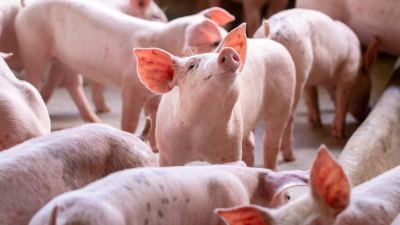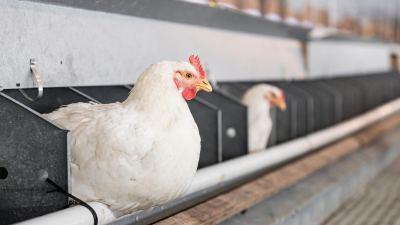2024 Alltech Asia Import Risk Analysis: Mycotoxin insights

Mycotoxin contamination poses a growing concern for animal feed producers worldwide. Asian feed production, for example, has been steadily increasing, with a significant reliance on imported grains. As this trend is projected to continue, understanding the mycotoxin risks associated with these imported grains is paramount. The Alltech Asia Import Risk Analysis provides insights into the prevalence and types of mycotoxins present in grains sourced from various regions globally.
Accurate mycotoxin analysis is essential for identifying and mitigating contamination risks in animal feed. Various analytical methods, such as Alltech 37+®, Alltech® RAPIREAD™, and collaborations with organizations such as SGS, Masterfeeds and Stratford Labs, form the basis of the Alltech Asia Import Risk Analysis report.
The analysis assessed the mycotoxin risks in grains — such as corn, wheat, barley and byproducts — sourced from Europe, North America, Canada and Latin America for feed and livestock producers in the Asia-Pacific region.
Europe
In 2023, Europe faced significant mycotoxin challenges, especially in small grains like barley. Adverse weather conditions, including prolonged rainfall, exacerbated contamination levels in Northern and Western European countries. Fusarium toxins, such as deoxynivalenol, rapidly multiplied in barley and wheat due to these severe conditions and posed challenges for crop growers.
Although the mycotoxin challenge in corn is lower compared to recent years, there are still pockets of higher risk in Central and Southern Europe. Aflatoxins, fumonisins and ochratoxins are the most prevalent mycotoxins in corn from these regions. Barley has the highest risk among small grains, with an average of six mycotoxins per sample and with 97% of samples containing two or more mycotoxins. Wheat samples, on the other hand, have an average of 3.5 mycotoxins per sample, with 90% of samples containing two or more mycotoxins. In Northwestern Europe, the average risk equivalent quantity (REQ) for wheat and barley is moderate to high, partly due to a delayed harvest and an increased presence of Fusarium toxins.
United States
Weather conditions in the U.S. had a significant impact on the mycotoxin profile of the corn samples analyzed. In the Southwest, a prolonged dry period resulted in a higher-than-usual fumonisin challenge. Whereas, in the East, lengthy periods of rainfall resulted in higher levels of deoxynivalenol (DON). This variation highlights the intricate interplay between climatic conditions and crop quality.
U.S. corn samples had an average of 4.4 mycotoxins per sample, with 87% containing two or more mycotoxins. In general, the mycotoxin challenge in corn grain is lower this year than in recent years. However, there are still pockets of higher risk in the Midwest and the South.
Canada
In Canada, dry conditions across the prairies led to a reduced overall crop output compared to the previous year. Fusarium toxins present the greatest challenge, with average DON levels of 1,882 ppb detected in wheat and barley samples, leading to a generally higher risk for this ingredient in pig diets. Additionally, high levels of zearalenone, predominantly observed in corn grain, are indicating potentially significant impacts, raising concerns for the pig industry.
Latin America
In Brazil, a favorable growing season led to an increase in overall corn yield. As with Canada, higher-than-average levels of DON and zearalenone could create challenges when corn from Brazil is included in pig diets. Zearalenone was present in 91% of samples tested, while the prevalence of DON was much lower. Although fumonisins were widely detected, with almost 70% of samples containing this type of mycotoxin, the levels are lower than for other mycotoxin groups.
Corn byproducts
Rising costs of raw materials commonly used for animal feed have led to an increased usage of byproducts. This poses challenges for mycotoxin contamination, particularly with corn byproducts having higher contamination levels compared to parent grains.
Using Alltech 37+ mycotoxin analysis, Alltech tested samples of corn gluten meal and dried distillers grains with solubles (DDGS) from North America, Asia and Europe. All had a minimum of two mycotoxins, with an average of 13.4. The most common and significant mycotoxins detected were emerging mycotoxins, type B trichothecenes, and Fusarium mycotoxins.
Monogastric vs. ruminant animals
While mycotoxin contamination poses a threat to both monogastric and ruminant animals, the animals’ digestive systems react differently to the threat. Understanding the nuances of mycotoxin risks for monogastric animals, such as pigs and poultry, compared to ruminants like cows and sheep, is crucial for effective feed management.
The Alltech Asia Import Risk Analysis report provides detailed insights into the impacts of specific findings on each species of animal, distinguishing between monogastric and ruminant species.
Conclusion
Mycotoxin contamination is a significant issue for animal feed producers globally, with impacts on various grains and byproducts from different regions. The 2024 Alltech Asia Import Risk Analysis report demonstrates the need for rigorous testing and quality-control measures and offers vital information to help producers make better decisions when purchasing ingredients and formulating animal diets.
With widespread and rising contamination in raw materials being imported into the Asia-Pacific region, it is crucial to implement effective mycotoxin management strategies. Doing so will optimize both the safety and well-being of animals and the profitability of operations. A holistic approach is essential to managing mycotoxins correctly, so establishing a routine mycotoxin testing program when purchasing feed ingredients and developing nutrition plans is crucial.
To access valuable insights on managing mycotoxin risks, download your copy of the 2024 Alltech Asia Import Risk Analysis here. We also invite you to visit knowmycotoxins.com for further resources. Don't miss this opportunity to safeguard your animals and your production.
Discover more content:
Reducing the challenge of storage mycotoxins | Alltech
The heightened risk of Penicillium mycotoxins in European forage (alltech.com)
Protecting grain and forage quality this winter | Alltech
2023 harvest: Early insights into Europe’s mycotoxin landscape (alltech.com)
About the author:
Dr. Ghazanfar Naseer is the regional ruminant and mycotoxin technical manager for Asia Pacific at Alltech. He is currently based in Australia.
Dr. Naseer was one of three people selected to participate in the Alltech Dairy Career Development Program in 2015. His current role in the company has taken him to countries around the world. Dr. Naseer has vast international experience and expertise in ruminant nutrition and management. He has worked with various dairy and beef producers across the globe, from small farms to large operations.
Born in Pakistan, Dr. Naseer earned his doctoral degree in veterinary medicine from PMAS-Arid Agriculture University in Rawalpindi, Pakistan, with a gold medal distinction. He is also certified as a CowSignals® Master Trainer in Thailand.
















